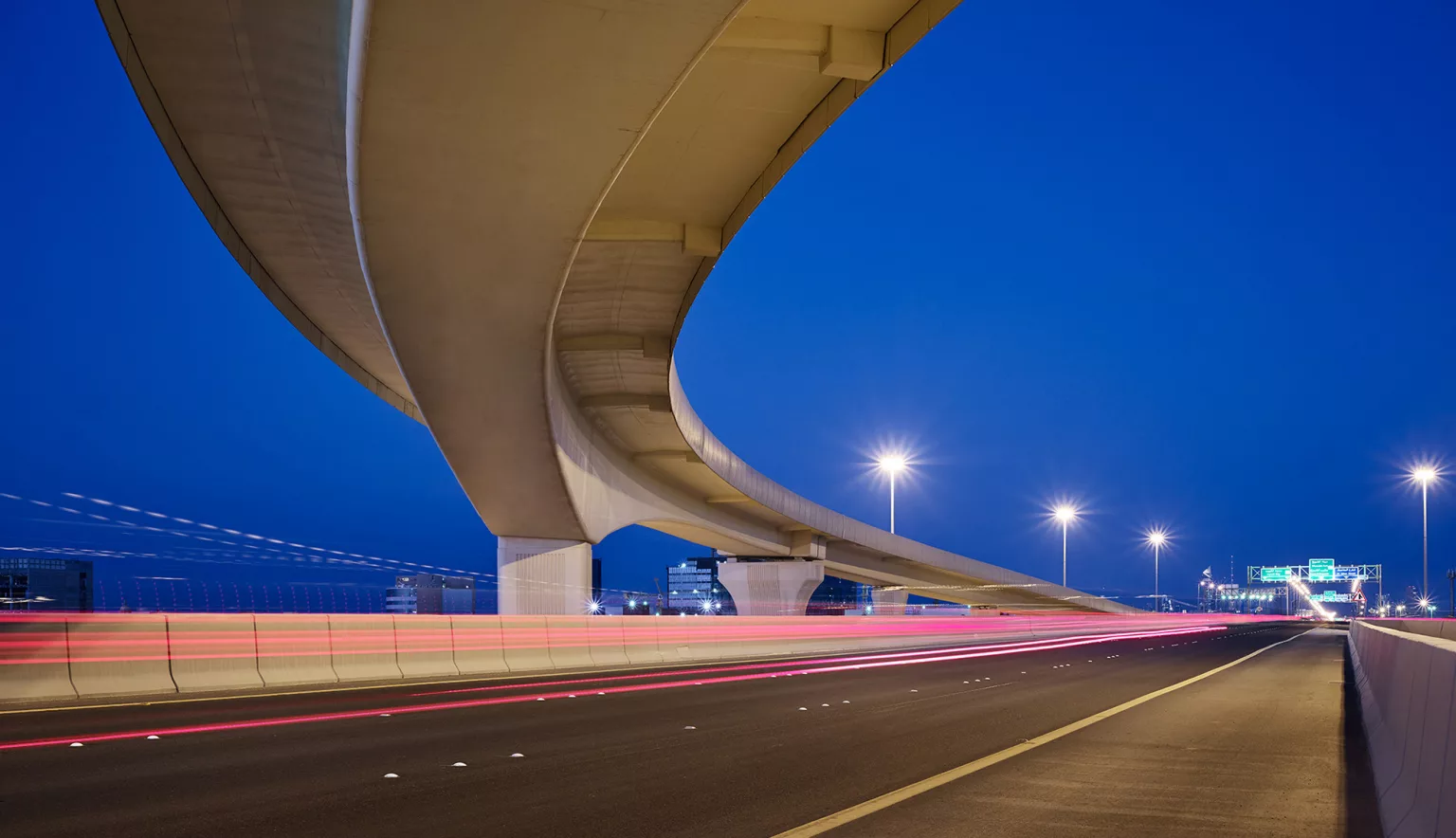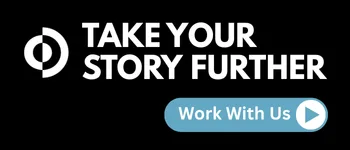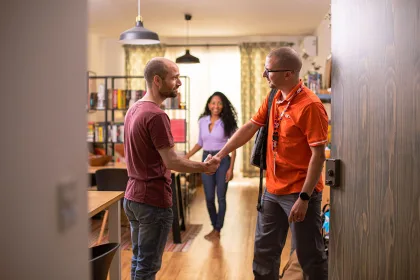Powered by industry best practices and proven by an array of esteemed projects, Pace continues to quicken its strides with architectural, engineering and planning excellence across the GCC and beyond.
UPPING THE ARCHITECTURAL TEMPO
The Olympic Games once looked quite different.
Today the infamous quadrennial event is a modern spectacle that captures the attention of more than three billion people around the world as the top athletes from 205 countries compete to become the best in their respective field. But it has not always just been about sport.
During the first four decades of the modern Olympic Games (beginning 1896), art was considered to be an essential part of the competition, with 151 medals having been awarded for music, painting, sculpture, literature and, perhaps most surprisingly, architecture.
Why? Well, much like sport, these crafts require the perfect combination of talent and dedication, the outcome of which can be similarly awe-inspiring.
Take the latter category of architecture, for example. The Sydney Opera House, Eiffel Tower and Pyramids of Giza are world-renowned tourist attractions largely because they are architectural feats. And indeed, it’s hard to forget those first amazing childhood encounters with such structures: driving over a major bridge for the first time or staring up at a skyscraper.
For Ahmed Soliman, these moments were more than just amazing – they inspired a passion.
“I’ve been interested in construction for as long as I can remember,” he states. “As a child I was fascinated with large buildings and bridges to the point that I used to build them out of ice cream sticks.
“Pursuing my interest, I opted to study Construction Engineering at the American University in Cairo and graduated in 1993. After that I got a job with ExxonMobil Middle East, starting as a projects engineer on the downstream side and continued on to become a regional projects manager.
“Unfortunately, I was only working on oil and gas projects with no architectural flavour to them, and by then I had become particularly interested in sustainable design, and the construction of iconic buildings. So I joined Pace in Kuwait in January 2005.”
Leaving after two years to undertake a stint at Kuwait Gulf Oil Company to manage large building projects, Soliman then returned to Pace to lead the project management office before becoming Director of Operations in March 2015 – the same role that he is still employed in today.
Powered by best practice So why go back to Pace?
For Soliman, the decision was a no brainer, not least because of the company’s reputation as an innovative presence within the global construction market.
“Pace has always been at the forefront of developing innovative project delivery methods under which complex and iconic structures have been completed,” he comments.
A quick glance at the past year provides the evidence. The company has been undergoing a digital transformation designed in line with the Royal Institute of British Architects’ ‘Plan of Work’, a process guideline geared towards assisting architectural companies in delivering high quality developments.
To this end, it has been upgrading and overhauling its design tools and software, implementing a digitally integrated delivery process in accordance with BIM level 2 targets.
“Digital transformation and its many intelligent platforms are merging together to form an evolving ecosystem,” Soliman explains. “This is increasingly empowering globally dispersed experts to collaborate and develop great designs and construction methodologies, offering the ability to visualise the end product and ascertain its cost and constructability with higher certainty.
“The industry is changing, and we want to maintain our status as a first mover. Without question, our focus on progressive design quality and excellence is what sets us apart from our peers.”
Indeed, you only have to look at Pace’s projects to understand how this forward-thinking approach pays dividends.
Travel back to 1992 and you will find the company leveraging state-of-the-art technologies in the development of the Arab Organisations headquarters building, tapping into the Ministry of Planning mainframe computer which enabled it to successfully deliver what was the largest all-glass supported curtain wall in the world.
And similarly monumental achievements have come thick and fast in the decades since.
The Jahra and Farwaniya Court Complexes, completed in 2016-17 and costing $263 million each, house the largest automated car parking facility anywhere in the world (approved by the Guinness World Records). Meanwhile, the firm was a critical player in the development of Jahra Medical City – a 1,200-bed tertiary medical complex that cost $1.2 billion to complete.
“We’re also proud of the Jahra Road and Jamal Abdul Nasser street development projects, which in 2017 were the largest viaducts in the world,” Soliman adds.
“These were built in a heavily dense area over a 10-year period, costing $1.9 billion. The design and construction was done in symbiotic collaboration with Louis Berger which was hosted at our Kuwait offices, and delivered under challenging circumstances regarding traffic management, diversion of yet to be detected utilities and services, and road alignment passing adjacent to royal housing estates.”
This latter project also won the International Road Federation (IRF) Global Achievement Award for Programme Management in 2018 – a first global infrastructure award for the country of Kuwait.
COLLABORATION AND COORDINATION
Important and impressive as its role has been in delivering an array of esteemed developments extending far beyond the aforementioned, Pace can’t take all the credit for its successes over the years.
And it doesn’t, Soliman taking the opportunity to pay tribute to the efforts of its loyal, industry-leading workforce, iterating that the company seeks to recognise and empower their contributions at every given opportunity.
“‘People First’ is a cornerstone of our vision and operating model,” he reveals. “This is manifested in the great diversity of our employee base, comprising a multitude of backgrounds, experiences and skills with 37 nationalities and 42 languages.”
So how does this ethos play out in practice? Simply, the firm ensures staff at all levels are engaged on a day to day basis, both in regard to project activities and corporate transformation programmes.
“Our philosophy is based on an adaptation of a meritocracy approach where major initiatives and internal projects are accelerated through wide and deep engagement of all staff at all levels,” Soliman states. “Decisions are based on the merits of the ideas put forward and the believability and track record of the originator, no matter where they are in the company hierarchy.
“It serves to encourage staff to contribute, excel, and come forward with creative ideas at all levels.”
Staff are not the only facilitator of Pace’s continued strides, however.
Coordination with specialist contractors and suppliers is likewise deemed critical during the design stages, these parties helping to validate drawings and specifications used in any final tender documents.
“We also find that continuous engagement with the manufacturing and specialist subcontractors’ market ensures Pace can better identify and adopt the most efficient construction methods and design details within its practices,” Soliman adds. “Vice versa, it equally ensures manufacturers and subcontractors are aware of ongoing advances in design and ever-increasing high-performance building requirements.”
MAINTAINING MOMENTUM
Having found great success in its innovative, collaborative attitudes to date, the company’s ethos will not waver moving forward.
In fact, in the eyes of the Director of Operations, these same principles will be more important than ever before. “We anticipate a challenging market in 2020, with less public sector direct spending and more emphasis on public-private partnership projects that will include private sector engagement within public service developments,” he affirms.
“This will change the operating and delivery landscape, and the challenge for both us and our peers will be to adapt.”
Indeed, adapt is exactly what Pace plans to do.
Local Kuwait government legislation is increasingly favouring sustainable and green building design, recent laws now requiring 10 percent of government building power demand to be generated from on-site renewable energy sources, for example.
Meanwhile, client demands continue to heighten, seeking competitive offerings that deliver projects faster, cheaper and more efficiently.
“Both of these trends will require consultants and contractors in our industry to devise more innovative processes for every stage of the development, from procurement to delivery, and work more together more closely than ever before,” Soliman comments, offering his overriding outlook as our conversation comes to a close.
“For us, both continually exceeding expectation in the face of these growing trends, as well as expanding further into operating markets outside of Kuwait such as KSA and Bahrain will ensure that 2020 is a busy, challenging and exciting year.”































